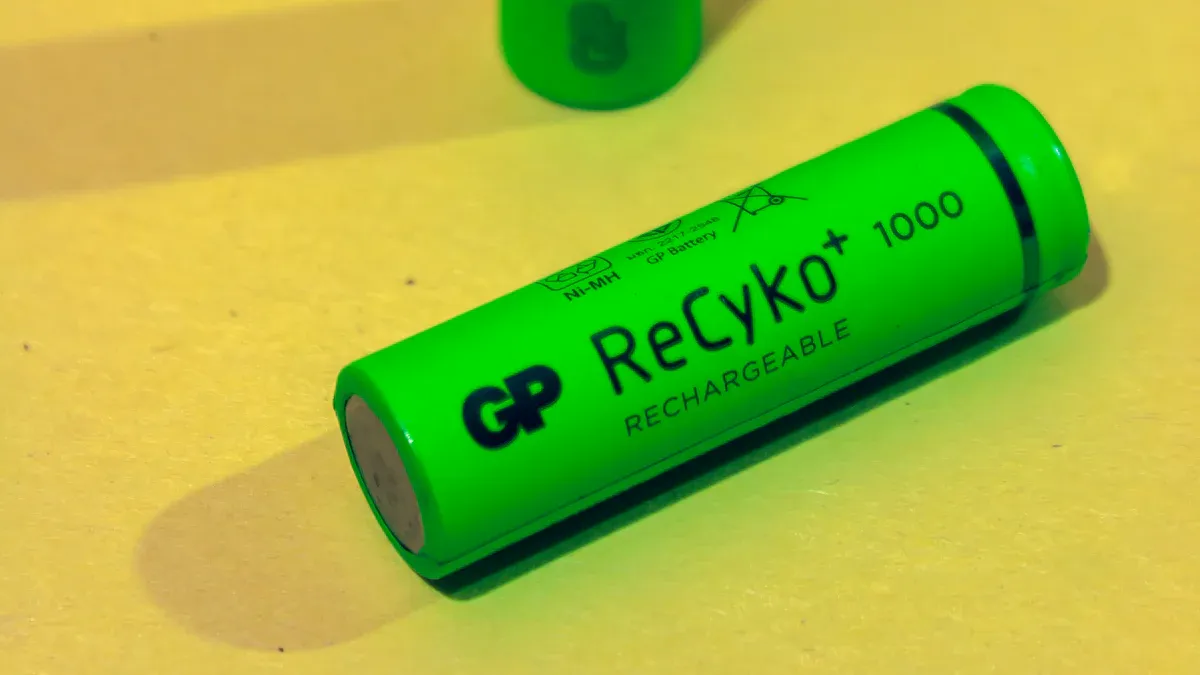
The global market for rechargeable batteries thrives on innovation and reliability, with a few manufacturers consistently leading the charge. Companies like Panasonic, LG Chem, Samsung SDI, CATL, and EBL have earned their reputation through cutting-edge technology and exceptional performance. Panasonic, for instance, is renowned for its advanced lithium-ion batteries, widely used in electric vehicles and consumer electronics. LG Chem and Samsung SDI stand out for their robust supply chains and significant market shares, with Samsung SDI reporting annual battery sector sales revenue of KRW 15.7 trillion. CATL excels in sustainability and scalability, while EBL offers high-capacity solutions tailored to consumer needs. These manufacturers set benchmarks for the highest quality rechargeable batteries in terms of durability, safety, and consistent performance.
Key Takeaways
- Panasonic, LG Chem, Samsung SDI, CATL, and EBL make great rechargeable batteries. Each company is good at things like new ideas, eco-friendliness, and performance.
- Lithium-ion batteries are the best for storing lots of energy and lasting a long time. They work well in phones and electric cars, giving steady and strong power.
- Safety is very important for rechargeable batteries. Check for labels like IEC 62133 to make sure they follow safety rules and lower the chance of problems.
- Think about what your device needs when picking a battery. Choose one that fits your device’s energy needs for better use and longer life.
- Taking care of batteries can make them last much longer. Keep them away from very hot or cold places and don’t overcharge them to keep them working well.
Criteria for High-Quality Rechargeable Batteries
Energy Density
Energy density is a critical factor in determining the performance of rechargeable batteries. It measures the amount of energy stored per unit weight or volume, directly influencing the battery’s efficiency and portability. Lithium-ion batteries, for instance, offer gravimetric energy densities ranging from 110 to 160 Wh/kg, making them ideal for applications requiring lightweight and compact power sources, such as smartphones and electric vehicles.
The trade-offs between energy density and other factors, such as cycle life, are evident across different battery types. Nickel-Metal Hydride (NiMH) batteries provide energy densities between 60 and 120 Wh/kg, balancing moderate capacity with affordability. In contrast, reusable alkaline batteries deliver an initial energy density of 80 Wh/kg but have a limited cycle life of only 50 cycles.
| Battery Type | Gravimetric Energy Density (Wh/kg) | Cycle Life (to 80% of initial capacity) | Internal Resistance (mΩ) |
|---|---|---|---|
| NiCd | 45-80 | 1500 | 100 to 200 |
| NiMH | 60-120 | 300 to 500 | 200 to 300 |
| Lead Acid | 30-50 | 200 to 300 | <100 |
| Li-ion | 110-160 | 500 to 1000 | 150 to 250 |
| Li-ion polymer | 100-130 | 300 to 500 | 200 to 300 |
| Reusable Alkaline | 80 (initial) | 50 | 200 to 2000 |
Tip: Consumers seeking the highest quality rechargeable batteries should prioritize lithium-ion options for applications requiring high energy density and long cycle life.
Lifespan and Durability
The lifespan of a rechargeable battery refers to the number of charge-discharge cycles it can endure before its capacity drops below 80% of the original value. Durability, on the other hand, encompasses the battery’s ability to withstand environmental stressors, such as temperature fluctuations and mechanical impacts.
Long-term lifetime tests and accelerated aging models have been instrumental in evaluating battery durability. These tests simulate real-world conditions, including varying depths of discharge and charge rates, to predict battery longevity. For example, lithium-ion batteries typically last between 500 and 1,000 cycles, depending on usage patterns and storage conditions. Nickel-Cadmium (NiCd) batteries, known for their robustness, can achieve up to 1,500 cycles, making them suitable for industrial applications.
Note: Proper storage and maintenance significantly extend battery lifespan. Avoid exposing batteries to extreme temperatures or overcharging to preserve their durability.
Safety Features
Safety is paramount in rechargeable battery design, as incidents involving battery failures can lead to catastrophic consequences. Manufacturers incorporate multiple safety mechanisms, such as thermal cutoffs, pressure relief vents, and advanced electrolyte formulations, to mitigate risks.
Historical safety incidents underscore the importance of rigorous testing and compliance with standards like IEC 62133. For instance, the Boeing 787 Dreamliner experienced battery failures in 2013 due to electrical shorts, prompting design modifications to enhance safety. Similarly, the UPS 747-400 freighter crash in 2010 highlighted the dangers of lithium battery fires, leading to stricter regulations for air transport.
| Incident Description | Year | Outcome |
|---|---|---|
| Boeing 787 Dreamliner battery failure due to electric short | 2013 | Battery design modified for safety |
| UPS 747-400 freighter fire caused by lithium battery | 2010 | Aircraft crash due to fire |
| National Transportation Safety Board reported battery incidents with NiCd batteries | 1970s | Safety improvements made over time |
Alert: Consumers should look for certifications like IEC 62133 when purchasing rechargeable batteries to ensure compliance with global safety standards.
Performance Consistency
Performance consistency is a critical factor when evaluating rechargeable batteries. It refers to the ability of a battery to maintain stable performance metrics, such as capacity retention and energy output, over repeated charge-discharge cycles. Manufacturers prioritize this attribute to ensure reliability across various applications, from consumer electronics to industrial equipment.
Key Metrics for Measuring Consistency
Several tests and metrics assess the performance consistency of rechargeable batteries. These evaluations provide insights into how well a battery retains its capacity and functionality over time. The table below highlights some of the most common metrics used in the industry:
| Test/Metric | Value at 235th Cycle | Description |
|---|---|---|
| Capacity Retention (Bare Si-C) | 70.4% | Indicates the percentage of original capacity retained after 235 cycles. |
| Capacity Retention (Si-C/PD1) | 85.2% | Higher retention compared to bare Si-C, showing better performance. |
| Capacity Retention (Si-C/PD2) | 87.9% | Best performance among the samples, indicating superior stability over cycles. |
| ctotal (60% Electrolyte) | 60.9 mAh μl–1 | Consistent performance indicator, unaffected by electrolyte volume. |
| ctotal (80% Electrolyte) | 60.8 mAh μl–1 | Similar to 60% electrolyte, demonstrating reliability across different conditions. |
| Cycle Life Assessment | N/A | Standardized method to evaluate battery performance over time. |
The data reveals that batteries with advanced formulations, such as Si-C/PD2, exhibit superior capacity retention. This highlights the importance of material innovation in achieving consistent performance.
Factors Influencing Performance Stability
Several factors contribute to the consistency of rechargeable batteries. These include:
- Material Composition: High-quality materials, such as silicon-carbon composites, enhance stability and reduce degradation over time.
- Electrolyte Optimization: Proper electrolyte volume ensures uniform ion flow, minimizing performance fluctuations.
- Thermal Management: Effective heat dissipation prevents overheating, which can compromise battery integrity.
The chart below illustrates how different battery configurations perform in terms of capacity retention and total capacity (ctotal) across varying conditions:
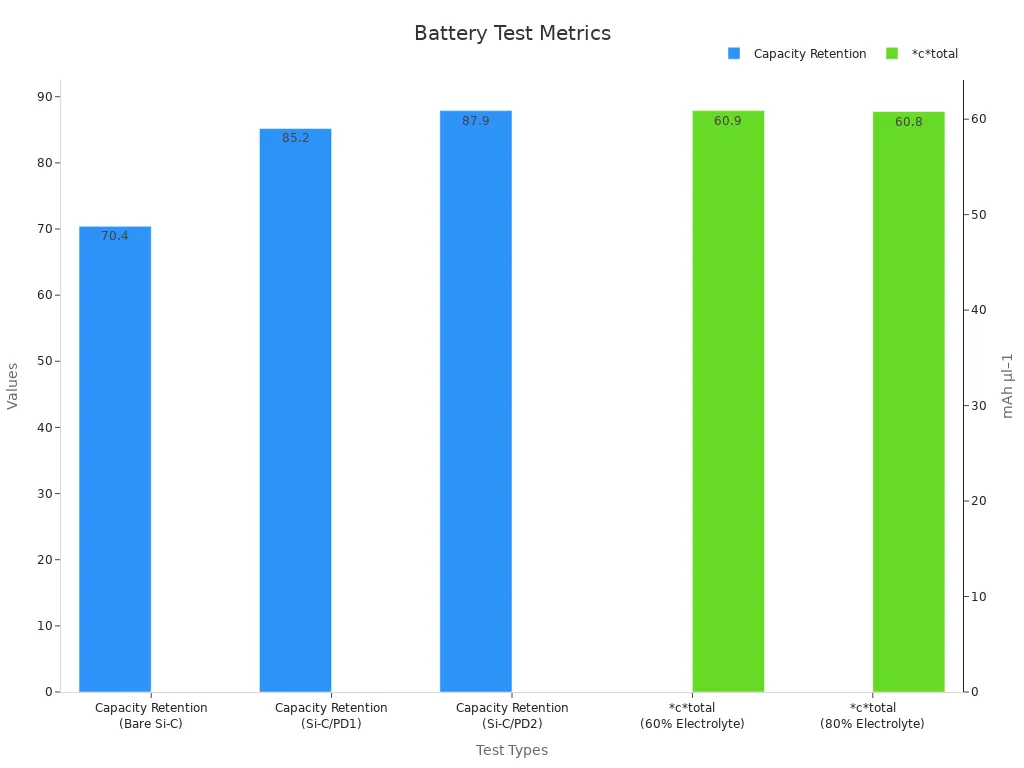
Why Performance Consistency Matters
Consistent performance ensures that devices powered by rechargeable batteries operate reliably throughout their lifespan. For instance, electric vehicles require stable energy output to maintain driving range, while medical devices depend on uninterrupted power for critical operations. Batteries with poor consistency may experience rapid capacity loss, leading to frequent replacements and increased costs.
Tip: Consumers should consider batteries with proven capacity retention metrics and robust thermal management systems to ensure long-term reliability.
By focusing on performance consistency, manufacturers can deliver products that meet the demands of modern applications while minimizing environmental and economic impacts.
Top Manufacturers and Their Strengths
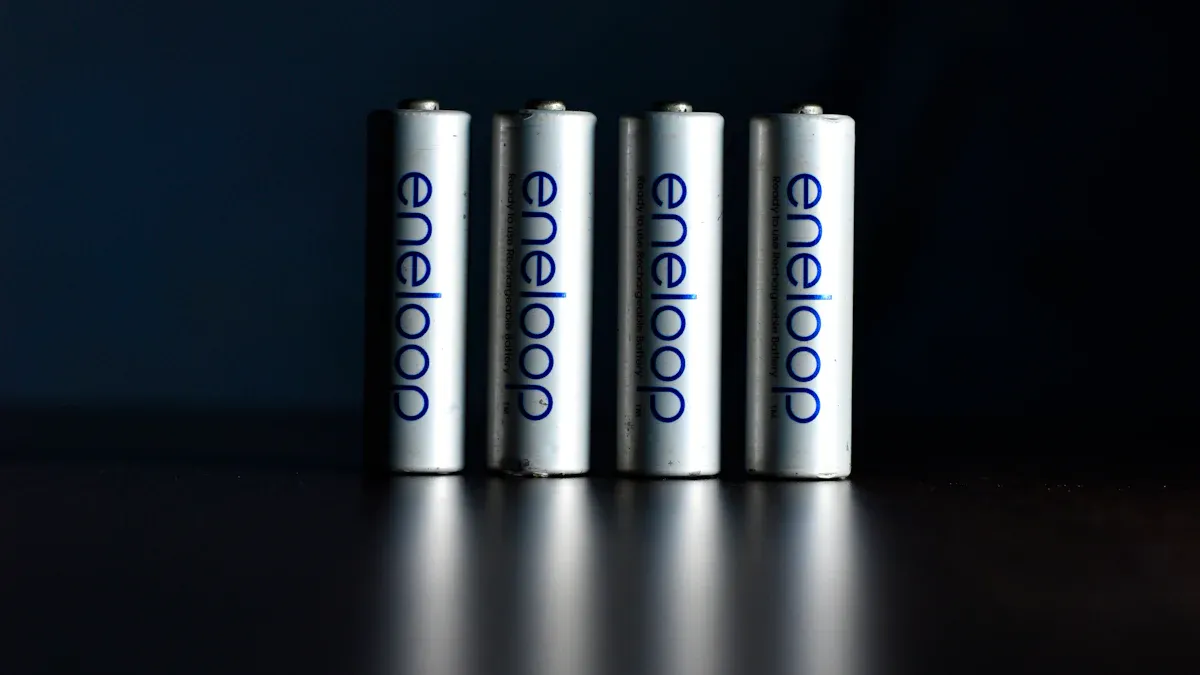
Panasonic: Innovation and Reliability
Panasonic has established itself as a pioneer in the rechargeable battery industry through relentless innovation and a commitment to reliability. The company invests heavily in research and development to create cutting-edge battery technologies that cater to evolving consumer needs. Its lithium-ion batteries, known for their high energy density and long life cycles, are widely used in high-tech applications such as electric vehicles and consumer electronics.
- Panasonic’s eneloop™ rechargeable batteries stand out for their exceptional durability, offering up to five times more recharge cycles than many competing brands.
- Users consistently report longer-lasting performance and faster recharge times, which underscores the brand’s reputation for reliability.
- The company prioritizes safety by incorporating advanced mechanisms to prevent overheating, short-circuiting, and other potential failures. Each battery undergoes rigorous testing to meet stringent safety standards, ensuring durability even in harsh conditions.
Panasonic’s focus on sustainability further enhances its appeal. By maintaining power over time and reducing waste through extended battery life, the company aligns with global efforts to minimize environmental impact. These qualities make Panasonic a top choice for consumers seeking the highest quality rechargeable batteries.
LG Chem: Advanced Technology
LG Chem has earned its position as a leader in the rechargeable battery market through advanced technological breakthroughs and a strong focus on efficiency. Its lithium-ion batteries are particularly renowned for their performance in the electric vehicle sector, where durability and affordability are critical.
- The company’s RESU residential energy storage product has received widespread acclaim for its quality and innovation.
- LG Chem partners with 16 of the top 29 global automakers, solidifying its dominance as the world’s largest automotive battery supplier.
- Its 12V lithium-ion battery packs deliver high power output and fast charging capabilities, making them ideal for energy storage solutions.
- LG Chem operates 40 production plants across three continents, ensuring robust manufacturing capabilities.
- The company holds multiple safety certifications, which enhance its credibility and consumer trust.
- Its batteries consistently demonstrate high efficiency, with features like rapid charging and reliable power delivery.
By combining technological excellence with a commitment to quality, LG Chem continues to set benchmarks in the rechargeable battery industry.
Samsung SDI: Versatility and Performance
Samsung SDI excels in delivering versatile and high-performing rechargeable batteries. Its products are designed to meet the demands of diverse applications, from consumer electronics to electric vehicles.
- Samsung SDI’s batteries boast an impressive energy density of 900 Wh/L, enabling compact designs without compromising power.
- With a long cycle life exceeding 1,000 cycles and a Coulomb efficiency of 99.8%, these batteries ensure consistent performance over time.
- In the electric vehicle market, Samsung SDI’s batteries enable a driving range of up to 800 kilometers on a single charge, showcasing their superior energy retention.
The company’s focus on innovation extends to its manufacturing processes, which prioritize sustainability and efficiency. By delivering reliable and versatile solutions, Samsung SDI has cemented its reputation as a leader in the rechargeable battery market.
CATL: Sustainability and Scalability
CATL (Contemporary Amperex Technology Co., Limited) has emerged as a global leader in rechargeable battery production, driven by its commitment to sustainability and scalability. The company actively pursues innovative solutions to reduce environmental impact while meeting the growing demand for energy storage systems.
- CATL has set ambitious goals to achieve net-zero emissions by 2050. It plans to electrify passenger vehicles by 2030 and heavy trucks by 2035, demonstrating its dedication to sustainable transportation.
- The development of sodium-ion batteries showcases CATL’s ability to innovate. These batteries offer fast charging capabilities and high energy density, making them suitable for diverse applications.
- The introduction of the M3P battery marks another milestone. This battery improves energy density while reducing costs compared to traditional lithium iron phosphate (LFP) batteries.
- CATL’s condensed battery, boasting an energy density of 500 Wh/kg, is set for mass production by the end of 2023. This advancement positions the company as a pioneer in high-performance battery technology.
CATL’s focus on scalability ensures that its products can meet the demands of industries ranging from electric vehicles to renewable energy storage. By combining sustainability initiatives with cutting-edge technology, CATL continues to set benchmarks for the highest quality rechargeable batteries.
EBL: High-Capacity Rechargeable Options
EBL specializes in producing high-capacity rechargeable batteries tailored to consumer needs. The brand is known for its affordability and versatility, making it a popular choice for everyday applications. However, capacity testing results reveal discrepancies between advertised and actual performance.
| Battery Type | Advertised Capacity | Measured Capacity | Difference |
|---|---|---|---|
| EBL AA Batteries | 2800mAh | 2000-2500mAh | 300-800mAh |
| EBL Dragon Batteries | 2800mAh | 2500mAh | 300mAh |
| Year of the Dragon AAA | 1100mAh | 950-960mAh | 140-150mAh |
Despite these differences, EBL’s batteries remain a reliable option for consumers seeking cost-effective solutions. The Year of the Dragon series outperforms regular EBL cells, offering improved capacity retention. EBL AA batteries typically measure between 2000-2500mAh, while Dragon batteries achieve approximately 2500mAh.
Tip: Consumers should consider EBL batteries for applications where affordability and moderate capacity are priorities. While the measured capacities may fall short of advertised claims, EBL batteries still deliver dependable performance for everyday use.
Tenergy Pro and XTAR: Reliable and Affordable Choices
Tenergy Pro and XTAR have established themselves as dependable brands in the rechargeable battery market. Their products offer a balance of affordability and reliability, making them ideal for budget-conscious consumers.
Tenergy rechargeable batteries, such as the 2600mAh AA model, provide significant cost savings after just a few recharges. Users recoup their investment after three cycles, with additional recharges yielding further savings. This cost-effectiveness makes Tenergy batteries a practical alternative to standard alkaline options.
Reliability tests highlight the durability of Tenergy batteries. Wirecutter’s evaluations show that Tenergy’s 800mAh NiMH AA batteries maintain close to their advertised capacity even after 50 charge cycles. Trailcam Pro’s studies reveal that Tenergy Premium AA batteries retain 86% of their capacity at low temperatures, ensuring consistent performance in challenging conditions.
XTAR batteries also deliver dependable results. Known for their robust construction and long cycle life, XTAR products cater to consumers seeking affordable yet high-performing rechargeable batteries.
By combining affordability with proven reliability, Tenergy Pro and XTAR offer solutions that meet the needs of diverse applications, from household devices to outdoor equipment.
Types of Rechargeable Batteries and Best Use Cases
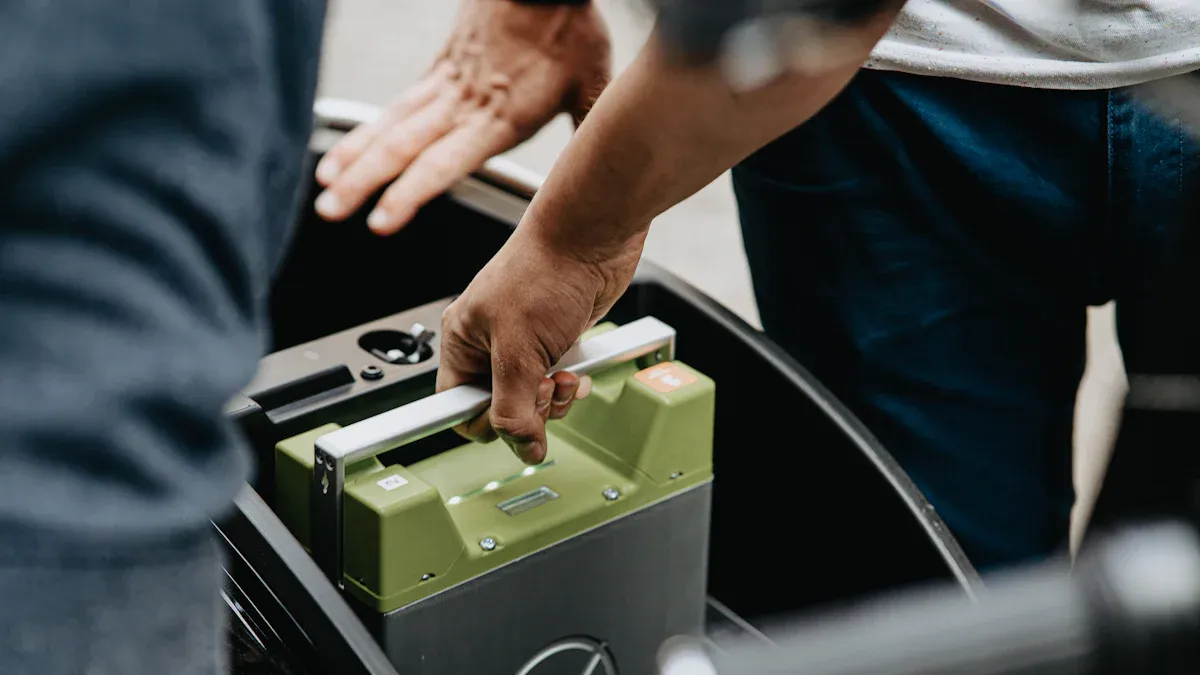
Lithium-Ion Batteries: High Energy Density and Versatility
Lithium-ion batteries dominate the rechargeable battery market due to their exceptional energy density and efficiency. These batteries store between 150-250 Wh/kg, outperforming alternatives like lithium polymer (130-200 Wh/kg) and lithium iron phosphate (90-120 Wh/kg). Their high energy density makes them ideal for applications requiring compact designs, such as smartphones, laptops, and electric vehicles.
- Efficiency: Lithium-ion batteries exhibit a charge-discharge efficiency of 90-95%, minimizing energy loss during operation.
- Durability: They support extended cycle life, allowing frequent use without significant capacity degradation.
- Maintenance: Unlike older technologies, lithium-ion batteries require minimal upkeep, eliminating the need for periodic discharge to prevent memory effect.
These attributes make lithium-ion batteries versatile across industries. In consumer electronics, they enable lightweight designs and long-lasting power. In the automotive sector, they provide extended driving ranges and fast charging capabilities, meeting the demands of electric vehicles.
Tip: Consumers seeking reliable, high-performance batteries for frequent-use devices should prioritize lithium-ion options.
Nickel-Metal Hydride Batteries: Cost-Effective and Durable
Nickel-Metal Hydride (NiMH) batteries offer a balance of affordability and durability, making them a popular choice for household and industrial applications. They endure 300-800 charge-discharge cycles, retaining capacity over time and providing long-term savings.
- Economic Benefits: Although their initial cost is higher than disposable dry cells, NiMH batteries become economical after a few recharge cycles.
- Lifecycle Cost: Modern NiMH batteries have a lifecycle cost of $0.28/Wh, which is 40% lower than lithium-ion alternatives.
- Sustainability: Their rechargeable nature reduces waste, aligning with environmental goals.
NiMH batteries are well-suited for devices requiring moderate energy output, such as cameras, toys, and portable lighting. Their durability also makes them reliable for high-use scenarios, including medical equipment and emergency systems.
Note: Consumers looking for cost-effective solutions with moderate energy needs should consider NiMH batteries.
Lead-Acid Batteries: Heavy-Duty Applications
Lead-acid batteries excel in heavy-duty applications due to their robustness and ability to handle high-rate partial state-of-charge scenarios. Studies highlight advancements in charge acceptance and cycle life through carbon additives and conductive nanofiber networks.
| Study Title | Key Findings |
|---|---|
| Impact of Carbon Additives on Charge Acceptance | Improved charge acceptance and cycle life under partial state-of-charge conditions. |
| Grafitized Carbon Nanofibers | Enhanced power availability and endurance for high-rate applications. |
| Gassing and Water Loss Measurements | Insights into battery performance under real-world conditions. |
These batteries are commonly used in automotive, industrial, and renewable energy sectors. Their reliability under demanding conditions makes them indispensable for powering critical equipment and energy storage systems.
Alert: Lead-acid batteries are ideal for applications requiring durability and high power output, such as backup systems and heavy machinery.
NiMH Batteries: Long-Lasting and Low Self-Discharge
Nickel-Metal Hydride (NiMH) batteries stand out for their ability to retain charge over extended periods. Modern low self-discharge (LSD) NiMH cells are engineered to address the common issue of rapid energy loss, ensuring batteries remain ready for use even after months of storage. This feature makes them ideal for devices that require reliable power without frequent recharging, such as remote controls, flashlights, and wireless keyboards.
Key Benefits of NiMH Batteries
- Low Self-Discharge: LSD NiMH batteries retain up to 85% of their charge after one year of storage, outperforming older NiMH models.
- Long-Lasting Performance: These batteries endure 300 to 500 charge cycles, providing consistent energy output throughout their lifespan.
- Eco-Friendly Design: Rechargeable NiMH batteries reduce waste by replacing disposable alkaline batteries, aligning with sustainability goals.
Continuous trickle charging, however, can accelerate degradation in nickel-based batteries. Users should avoid leaving NiMH batteries on chargers for extended periods to preserve their longevity. Brands like Eneloop and Ladda have demonstrated varying performance under such conditions, with some models showing better resilience than others.
Tip: To maximize the lifespan of NiMH batteries, remove them from chargers once fully charged and store them in a cool, dry place.
Applications and Versatility
NiMH batteries excel in applications requiring moderate energy output and long-term reliability. Their low self-discharge rates make them suitable for emergency devices, such as smoke detectors and backup lighting systems. Additionally, their ability to handle high-drain devices, including digital cameras and gaming controllers, showcases their versatility.
By combining durability with low self-discharge technology, NiMH batteries offer a dependable solution for consumers seeking long-lasting rechargeable options. Their eco-friendly design and consistent performance make them a valuable choice for both everyday and specialized applications.
Consumer Considerations
Matching Battery Type to Device
Selecting the right rechargeable battery for a device ensures optimal performance and longevity. Each battery type offers unique characteristics suited to specific applications. Lithium-ion batteries, for instance, are ideal for high-energy devices like smartphones, laptops, and electric vehicles due to their superior energy density and efficiency. Nickel-metal hydride (NiMH) batteries, on the other hand, work well in household devices such as cameras and toys, offering durability and moderate energy output.
Devices with high power demands, such as medical equipment or industrial tools, benefit from lead-acid batteries, known for their robustness and reliability. For low-drain devices like remote controls or flashlights, NiMH batteries with low self-discharge rates provide consistent performance over extended periods. Matching the battery type to the device not only enhances functionality but also reduces the need for frequent replacements, saving both time and money.
Tip: Always check the manufacturer’s recommendations to ensure compatibility between the battery and the device.
Budget and Cost Factors
Cost considerations play a significant role in choosing rechargeable batteries. While initial costs may seem higher than disposable alternatives, rechargeable batteries offer substantial long-term savings. For example, a lithium-ion battery with an initial cost of $50 can be recharged up to 1,000 times, significantly reducing the cost per use.
| Cost Type | Details |
|---|---|
| Initial Costs | Battery modules, inverters, charge controllers, installation, permits. |
| Long-Term Savings | Reduced electricity bills, avoided costs from outages, potential revenue. |
| Lifecycle Costs | Maintenance, replacement costs, warranties, and support. |
| Example Calculation | Initial cost: $50,000; Annual savings: $5,000; Payback period: 10 years. |
Consumers should also consider lifecycle costs, including maintenance and replacement expenses. Batteries with longer lifespans and warranties often provide better value over time. Competitive pricing in the market further benefits consumers, as manufacturers innovate to deliver cost-effective solutions.
Environmental Impact and Sustainability
Rechargeable batteries contribute to sustainability by reducing waste and conserving resources. Lithium-ion batteries, for example, have a lower environmental impact compared to disposable options. Life cycle assessments (LCA) evaluate their effects on climate change, human toxicity, and resource depletion, helping consumers make informed choices.
| Impact Category | ASSB-LSB | LIB-NMC811 | ASSB-NMC811 |
|---|---|---|---|
| Climate Change | Lower | Higher | Higher |
| Human Toxicity | Lower | Lower | Lower |
| Mineral Resource Depletion | Lower | Lower | Lower |
| Photochemical Oxidant Formation | Lower | Lower | Lower |
Additionally, advancements in battery technology, such as sodium-ion and aluminum-ion batteries, further enhance sustainability by utilizing abundant materials and reducing reliance on rare earth elements. By choosing eco-friendly options, consumers can minimize their environmental footprint while enjoying reliable energy solutions.
Note: Proper disposal and recycling of rechargeable batteries are essential to prevent environmental harm and recover valuable materials.
Brand Reputation and Warranty
Brand reputation plays a pivotal role in the rechargeable battery market. Consumers often associate well-established brands with reliability, performance, and customer satisfaction. Manufacturers with strong reputations consistently deliver products that meet or exceed industry standards. Their commitment to quality fosters trust and loyalty among users.
Warranty coverage further reinforces a brand’s credibility. A comprehensive warranty reflects the manufacturer’s confidence in the durability and performance of its batteries. Longer warranty durations signal a commitment to product longevity, while responsive customer service ensures a seamless claims process. These factors contribute to a positive consumer experience and reduce the risks associated with purchasing rechargeable batteries.
Key Aspects of Brand Reputation and Warranty
| Key Aspect | Description |
|---|---|
| Life Cycle | Batteries should endure many charge-discharge cycles without significant loss in performance. |
| Safety Features | Look for batteries with protections against overcharging, overheating, and short-circuits. |
| Temperature Tolerance | Batteries must function effectively across a wide temperature range. |
| Fast Charging Capabilities | Choose batteries that can recharge quickly to reduce downtime. |
| Warranty Duration | A longer warranty indicates manufacturer confidence in product longevity. |
| Comprehensive Coverage | Warranties should cover a range of issues, from defects to performance failures. |
| Ease of Claims | The warranty claim process should be straightforward and user-friendly. |
| Customer Service | Good warranties are backed by responsive customer support. |
Brands like Panasonic and LG Chem exemplify the importance of reputation and warranty. Panasonic’s rigorous testing protocols ensure reliability, while LG Chem’s partnerships with leading automakers highlight its industry dominance. Both companies offer warranties that cover defects and performance issues, providing peace of mind to consumers.
Tip: Consumers should prioritize brands with proven reputations and warranties that offer comprehensive coverage. These features safeguard investments and ensure long-term satisfaction.
By choosing reputable manufacturers with robust warranties, consumers can enjoy reliable performance and reduced maintenance costs. This approach minimizes risks and enhances the overall value of rechargeable batteries.
The rechargeable battery industry thrives on innovation, with leading manufacturers setting benchmarks for performance, safety, and sustainability. Companies like Panasonic, LG Chem, Samsung SDI, CATL, and EBL have demonstrated their expertise through advanced technologies and reliable products. For instance, Panasonic excels in durability, while CATL focuses on sustainability and scalability. These strengths have solidified their positions as market leaders.
| Key Players | Market Share | Recent Developments |
|---|---|---|
| Panasonic | 25% | New product launch in Q1 2023 |
| LG Chem | 20% | Acquisition of Company X |
| Samsung SDI | 15% | Expansion into European markets |
Understanding battery types and quality criteria is essential for selecting the highest quality rechargeable batteries. Factors like energy density, lifespan, and safety features ensure optimal performance across various applications. Consumers should evaluate their specific needs, such as device compatibility and environmental impact, before making a purchase.
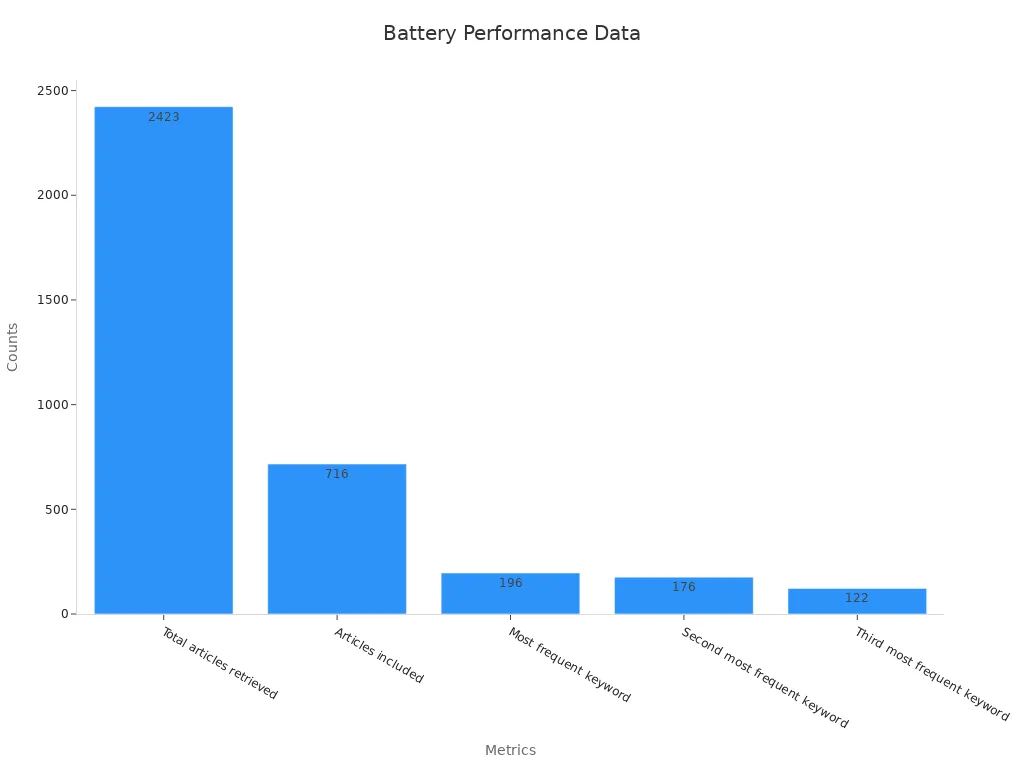
By considering these aspects, consumers can make informed decisions that align with their requirements and contribute to a sustainable future.
FAQ
What is the best type of rechargeable battery for everyday devices?
Lithium-ion batteries are ideal for everyday devices like smartphones and laptops due to their high energy density and long lifespan. For household items such as remote controls or flashlights, NiMH batteries with low self-discharge rates provide reliable performance and cost-effectiveness.
How can I extend the lifespan of my rechargeable batteries?
Store batteries in a cool, dry place and avoid exposing them to extreme temperatures. Remove batteries from chargers once fully charged to prevent overcharging. Follow the manufacturer’s guidelines for proper usage and maintenance to maximize their lifespan.
Are rechargeable batteries environmentally friendly?
Rechargeable batteries reduce waste by replacing disposable options, making them more eco-friendly. Lithium-ion and NiMH batteries have lower environmental impacts compared to alternatives. Proper recycling ensures valuable materials are recovered, further minimizing their ecological footprint.
How do I choose the right rechargeable battery for my device?
Match the battery type to your device’s energy requirements. Lithium-ion batteries suit high-energy devices, while NiMH batteries work well for moderate-energy applications. Always check the manufacturer’s recommendations for compatibility to ensure optimal performance.
What safety features should I look for in rechargeable batteries?
Look for batteries with built-in protections against overcharging, overheating, and short-circuiting. Certifications like IEC 62133 indicate compliance with global safety standards. These features ensure safe and reliable operation across various applications.
Post time: May-28-2025




